Mechanical and Metallurgical Properties of CO2 Laser Beam INCONEL 625 Welded Joints
Abstract
:1. Introduction
2. Materials and Methods
2.1. Parent Material and Edge Preparation
2.2. Melt Run Trials and Butt-Welding
2.3. Defects and Microstructure Investigations
2.4. Welding Distortions, Residual Stresses, and Mechanical Tests
3. Results and Discussion
3.1. Defects and Metallurgy
3.2. Microhardness Profiles
3.3. Tensile Strength
3.4. Distortion and Residual Stresses
4. Conclusions
- Full penetration of 5 mm thick Inconel 625 plates butt joint was obtained using a laser power of both 3 and 3.3 kW and a welding speed of 1.0 m/min. These values correspond to a heat input of 180 and 198 J/mm, respectively, which are much lower compared to those used in conventional fusion welding processes for the same material and geometry.
- Metallurgical investigation showed a typical epitaxial growth in the fusion zone with eventually some porosity and an extremely narrow heat-affected zone.
- The microhardness values in the weld bead of all specimens were found slightly greater than those measured on parent metal; this effect was attributed to the fusion zone finer microstructure compared to that of the parent metal.
- Despite the presence of some porosity in the fusion zone, the tensile strength of the joints was comparable to that of the parent metal, indicating excellent laser weldability of such kind of alloy,
- The higher the heat input, the higher the residual stress and distortion.
- The results obtained in this paper will be used, in future work, for calibrating a laser beam welding process numerical model.
Author Contributions
Funding
Institutional Review Board Statement
Informed Consent Statement
Data Availability Statement
Acknowledgments
Conflicts of Interest
References
- Kuo, T.Y.; Jeng, S.L. Porosity reduction in Nd–YAG laser welding of stainless steel and inconel alloy by using a pulsed wave. J. Phys. D Appl. Phys. 2005, 38, 722–728. [Google Scholar] [CrossRef]
- Yelamasetti, B.; Rajyalakshmi, G.; Venkat Ramana, G.; Sridhar Babu, B.; Vemanaboina, H. Comparison of metallurgical and mechanical properties of dissimilar joint of AISI 316 and Monel 400 developed by pulsed and constant current gas tungsten arc welding processes. Int. J. Adv. Manuf. Technol. 2020, 108, 2633–2644. [Google Scholar] [CrossRef]
- Vemanaboina, H.; Edison, G.; Akella, S. Weld bead temperature and residual stresses evaluations in multipass dissimilar INCONEL625 and SS316L by GTAW using IR thermography and x-ray diffraction techniques. Mater. Res. Express 2019, 6, 0965a9. [Google Scholar] [CrossRef]
- Sharma, S.; Taiwade, R.V.; Vashishtha, H. Effect of Continuous and Pulsed Current Gas Tungsten Arc Welding on Dissimilar Weldments Between Hastelloy C-276/AISI 321 Austenitic Stainless Steel. J. Mater. Eng. Perform. 2017, 26, 1146–1157. [Google Scholar] [CrossRef]
- Korrapati, P.K.; Avasarala, V.K.; Bhushan, M.; Ramkumar, K.D.; Arivazhagan, N.; Narayanan, S. Assessment of Mechanical Properties of PCGTA Weldments of Inconel 625. Procedia Eng. 2014, 75, 9–13. [Google Scholar] [CrossRef] [Green Version]
- Buddu, R.K.; Chauhan, N.S.; Raole, P. Mechanical properties and microstructural investigations of TIG welded 40 mm and 60 mm thick SS 316L samples for fusion reactor vacuum vessel applications. Fusion Eng. Des. 2014, 89, 3149–3158. [Google Scholar] [CrossRef]
- Vemanaboina, H.; Chandh, R.G.; SivaKrishna, P.; Kumar, A.K.; Karjuna, K.M.; Reddy, Y.S. A X-ray Diffraction Study of Residual Stresses Due to Multipass Welding of INCONEL600. Adv. Lightweight Mater. Struct. 2020, 561–567. [Google Scholar] [CrossRef]
- Prabu, S.S.; Ramkumar, K.D.; Arivazhagan, N. Microstructural evolution and precipitation behavior in heat affected zone of Inconel 625 and AISI 904L dissimilar welds. IOP Conf. Ser. Mater. Sci. Eng. 2017, 263, 062073. [Google Scholar] [CrossRef] [Green Version]
- Arivarasu, M.; Roshith, P.; Padmanaban, R.; Thirumalini, S.; Prabhakar, K.V.P.; Padmanabham, G. Investigations on metallurgical and mechanical properties of CO2 laser beam welded Alloy 825. Can. Met. Q. 2017, 56, 232–244. [Google Scholar] [CrossRef]
- Sokolov, M.; Salminen, A. Improving Laser Beam Welding Efficiency. Engineering 2014, 06, 559–571. [Google Scholar] [CrossRef] [Green Version]
- Oyyaravelu, R.; Kuppan, P.; Arivazhagan, N. Metallurgical and mechanical properties of laser welded high strength low alloy steel. J. Adv. Res. 2016, 7, 463–472. [Google Scholar] [CrossRef] [Green Version]
- Manikandan, M.; Hari, P.; Vishnu, G.; Arivarasu, M.; Ramkumar, K.D.; Arivazhagan, N.; Rao, M.N.; Reddy, G. Investigation of Microstructure and Mechanical Properties of Super Alloy C-276 by Continuous Nd: YAG Laser Welding. Procedia Mater. Sci. 2014, 5, 2233–2241. [Google Scholar] [CrossRef] [Green Version]
- Vemanaboina, H.; Naidu, G.G.; Kumar, G.V.; Reddy, D.R. Welding characteristics of butt-welded Inconel625 plate using CO2 laser beam. Mater. Today Proc. 2019, 19, 859–863. [Google Scholar] [CrossRef]
- Gordine, J. Some problems in welding Inconel 718. Weld. J. 1971, 50, 480. [Google Scholar]
- Pan, Y.-M.; Dunn, D.S.; Cragnolino, G.A.; Sridhar, N. Grain-boundary chemistry and intergranular corrosion in alloy 825. Met. Mater. Trans. A 2000, 31, 1163–1173. [Google Scholar] [CrossRef]
- Joseph, B.; Katherasan, D.; Sathiya, P.; Murthy, C.V.S. Weld metal characterization of 316L(N) austenitic stainless steel by electron beam welding process. Int. J. Eng. Sci. Technol. 2018, 4, 169–176. [Google Scholar] [CrossRef]
- Soltani, H.M.; Tayebi, M. Comparative study of AISI 304L to AISI 316L stainless steels joints by TIG and Nd:YAG laser welding. J. Alloys Compd. 2018, 767, 112–121. [Google Scholar] [CrossRef]
- Roshith, P.; Arivarasu, M.; Arivazhagan, N.; Srinivasan, A.; Phani Prabhakar, K.V. Investigations on induced residual stresses, mechanical and metallurgical properties of CO2 laser beam and pulse current gas tungsten arc welded SMO 254. J. Manuf. Process. 2019, 44, 81–90. [Google Scholar]
- Buddu, R.K.; Chauhan, N.L.; Raole, P.M. Investigations of Microstructure and Mechanical Properties of 60-mm-Thick Type 316L Stainless Steel Welded Plates by Multipass Tungsten Inert Gas Welding and Electron Beam Welding for Fusion Reactor Applications. Fusion Sci. Technol. 2014, 65, 248–254. [Google Scholar] [CrossRef]
- Campagnolo, A.; Ferro, P.; Romanin, L.; Meneghetti, G. Residual Notch Stress Intensity Factors in Welded Joints Evaluated by 3D Numerical Simulations of Arc Welding Processes. Materials 2021, 14, 812. [Google Scholar] [CrossRef] [PubMed]
- Vemanaboina, H.; Edison, G.; Akella, S.; Buddu, R.K. Thermal Analysis Simulation for Laser Butt Welding of Inconel625 Using FEA. Int. J. Eng. Technol. 2018, 7, 85–89. [Google Scholar] [CrossRef]
- Romanin, L.; Ferro, P.; Bonollo, F.; Berto, F. A Numerical and Experimental Analysis of Inconel 625 Electron-Beam Welding—Thermal Aspects. Procedia Struct. Integr. 2019, 18, 63–74. [Google Scholar] [CrossRef]
- Ahmad, G.N.; Raza, M.S.; Singh, N.; Kumar, H. Experimental investigation on Ytterbium fiber laser butt welding of Inconel 625 and Duplex stainless steel 2205 thin sheets. Opt. Laser Technol. 2020, 126, 106117. [Google Scholar] [CrossRef]
- Devendranath Ramkumar, K.; Sridhar, R.; Periwal, S.; Oza, S.; Saxena, V.; Hidad, P.; Arivazhagan, N. Investigations on the structure—Property relationships of electron beam welded Inconel 625 and UNS 32205. Mater. Des. 2015, 68, 158–166. [Google Scholar] [CrossRef]
- Katayama, S.; Kawahito, Y.; Mizutani, M. Elucidation of laser welding phenomena and factors affecting weld penetration and welding defects. Phys. Procedia 2010, 5, 9–17. [Google Scholar] [CrossRef] [Green Version]
- Arivarasu, M.; Devendranath Ramkumar, K.; Arivazhagan, N. Effect of continuous and pulsed current on the metallurgical and mechanical properties of gas tungsten arc welded AISI 4340 aeronautical and AISI 304 L austenitic stainless steel dissimilar joints. Mater. Res. 2015, 18, 59–77. [Google Scholar] [CrossRef] [Green Version]
- Inconel 625. Available online: https://static.markforged.com/downloads/Inconel-625.pdf (accessed on 20 May 2021).
- Ferro, P.; Berto, F. Quantification of the Influence of Residual Stresses on Fatigue Strength of Al-Alloy Welded Joints by Means of the Local Strain Energy Density Approach. Strength Mater. 2016, 48, 426–436. [Google Scholar] [CrossRef]
- Ferro, P. The local strain energy density approach applied to pre-stressed components subjected to cyclic load. Fatigue Fract. Eng. Mater. Struct. 2014, 37, 1268–1280. [Google Scholar] [CrossRef]
- Arivarasu, M.; Ramkumar, K.D.; Arivazhagan, N. Characterization of tensile strength and impact toughness of autogenous PCGTA weldments of aeronautical steel and austenitic stainless steel. Met. Mater. 2016, 54, 279–288. [Google Scholar] [CrossRef]
- Venkata Ramana, P.; Madhusudhan Reddy, G.; Mohandas, T.; Gupta, A.V. Microstructure and residual stress distribution of similar and dissimilar electron beam welds—Maraging steel to medium alloy medium carbon steel. Mater. Des. 2010, 31, 749–760. [Google Scholar] [CrossRef]
- Arulmurugan, B.; Manikandan, M. Development of welding technology for improving the metallurgical and mechanical properties of 21st century nickel based superalloy 686. Mater. Sci. Eng. A 2017, 691, 126–140. [Google Scholar] [CrossRef]
- Janicki, D.M. Fiber Laser Welding of Nickel Based Superalloy Inconel 625. Available online: https://www.spiedigitallibrary.org/conference-proceedings-of-spie/8703/87030R/Fiber-laser-welding-of-nickel-based-superalloy-Inconel-625/10.1117/12.2013430.short?SSO=1 (accessed on 30 June 2021).
- Ramana, P.V.; Reddy, G.M.; Mohandas, T. Microstructure, hardness and residual stress distribution in maraging steel gas tungsten arc weldments. Sci. Technol. Weld. Join. 2008, 13, 388–394. [Google Scholar] [CrossRef]
- Ferro, P.; Petrone, N. Asymptotic thermal and residual stress distributions due to transient thermal loads. Fatigue Fract. Eng. Mater. Struct. 2009, 32, 936–948. [Google Scholar] [CrossRef]
- Ferro, P.; Bonollo, F.; Tiziani, A. Laser welding of copper–nickel alloys: A numerical and experimental analysis. Sci. Technol. Weld. Join. 2005, 10, 299–310. [Google Scholar] [CrossRef]
- Ferro, P. Influence of phase transformations on the asymptotic residual stress distribution arising near a sharp V-notch tip. Model. Simul. Mater. Sci. Eng. 2012, 20, 085003. [Google Scholar] [CrossRef]
- Ferro, P.; Bonollo, F.; Tiziani, A. Methodologies and experimental validations of welding process numerical simulation. Int. J. Comput. Mater. Sci. Surf. Eng. 2010, 3, 114. [Google Scholar] [CrossRef]
- Vemanaboina, H.; Akella, S.; Rao, A.U.M.; Gundabattini, E.; Buddu, R.K. Analysis of thermal stresses and its effect in the multipass welding process of SS316L. Proc. Inst. Mech. Eng. Part E J. Process. Mech. Eng. 2020, 235, 384–391. [Google Scholar] [CrossRef]
- Costa, E.S.; Assunção, P.D.C.; Dos Santos, E.B.F.; Feio, L.G.; Bittencourt, M.S.Q.; Braga, E.M. Residual stresses in cold-wire gas metal arc welding. Sci. Technol. Weld. Join. 2017, 22, 706–713. [Google Scholar] [CrossRef]
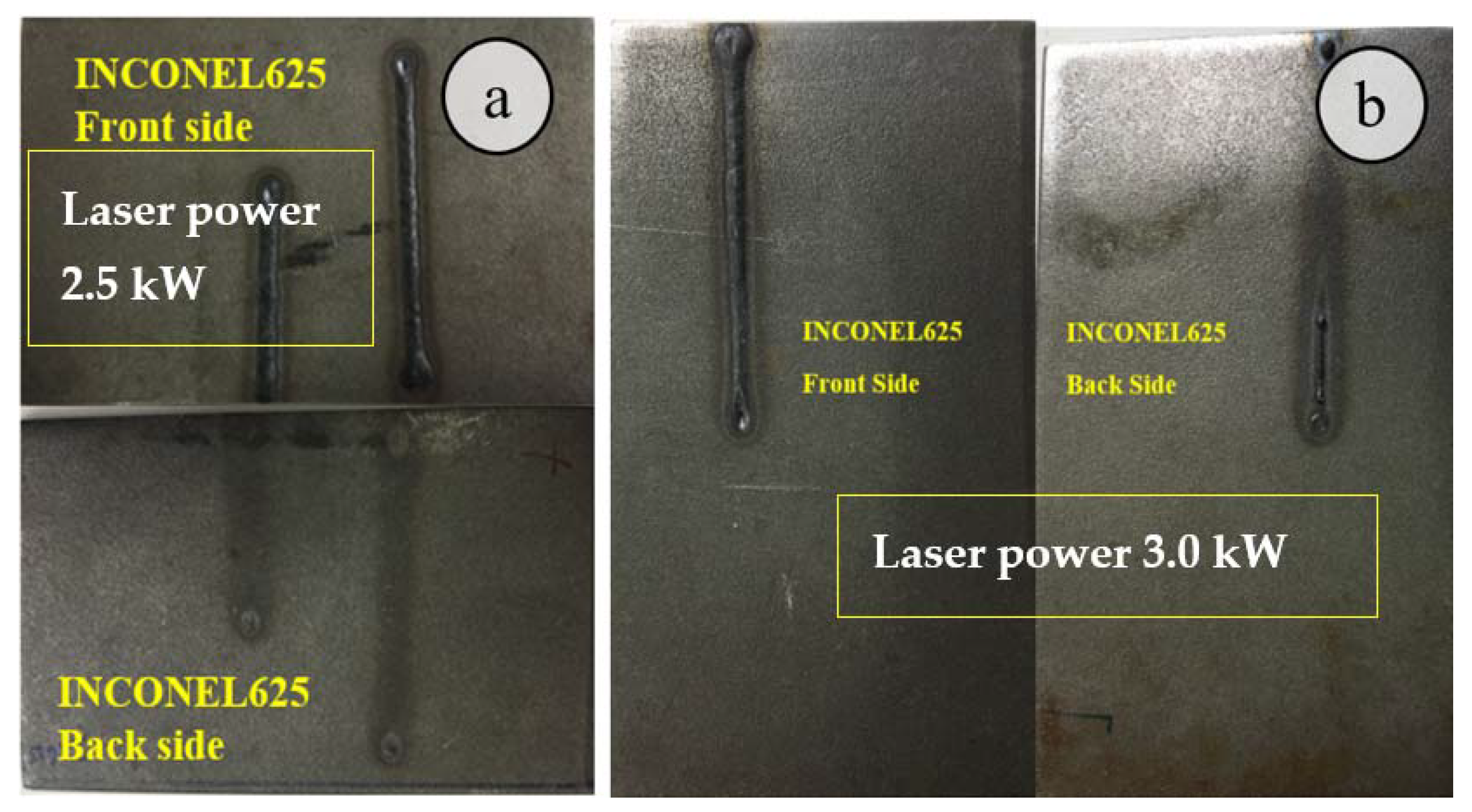
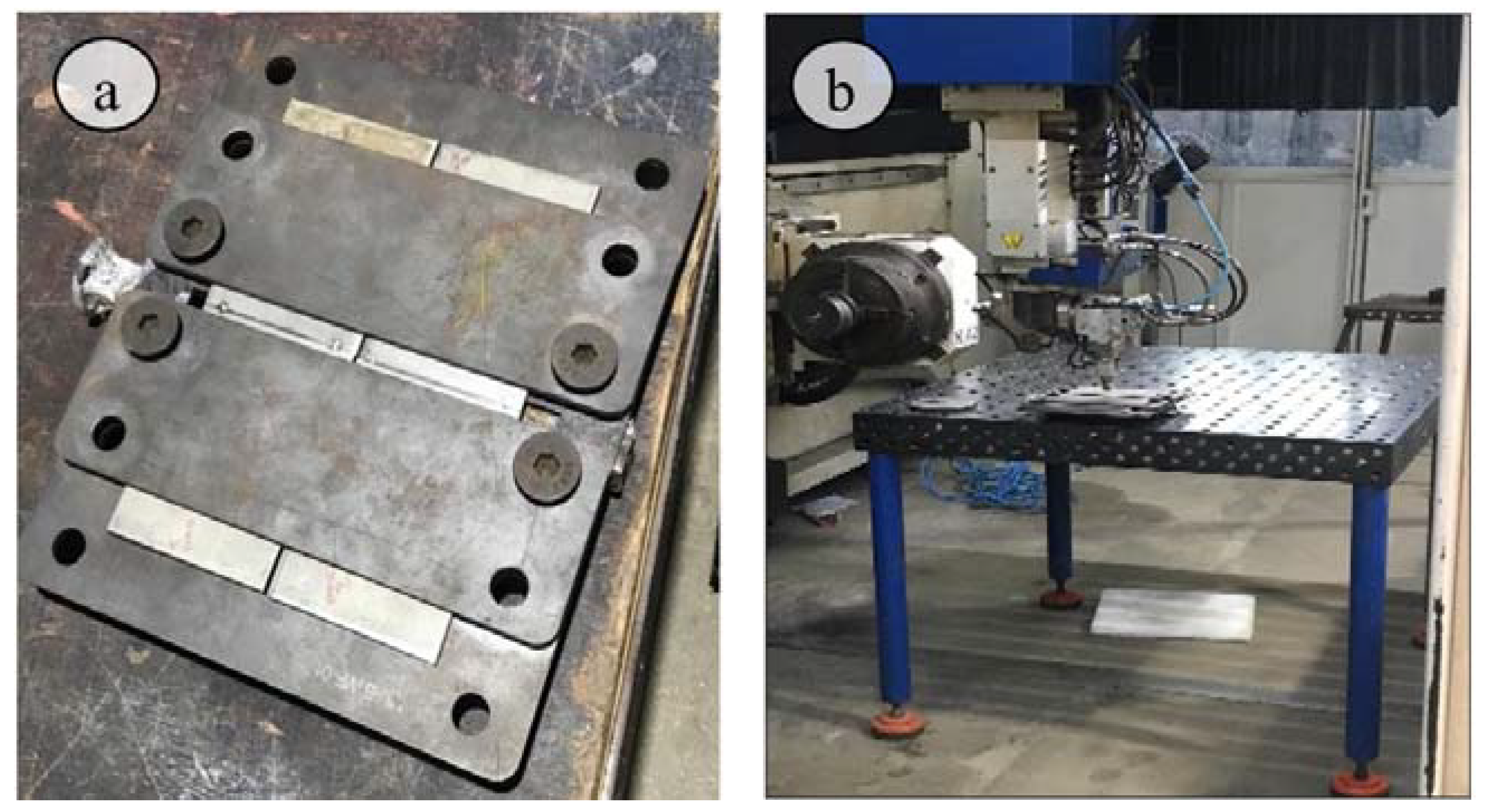
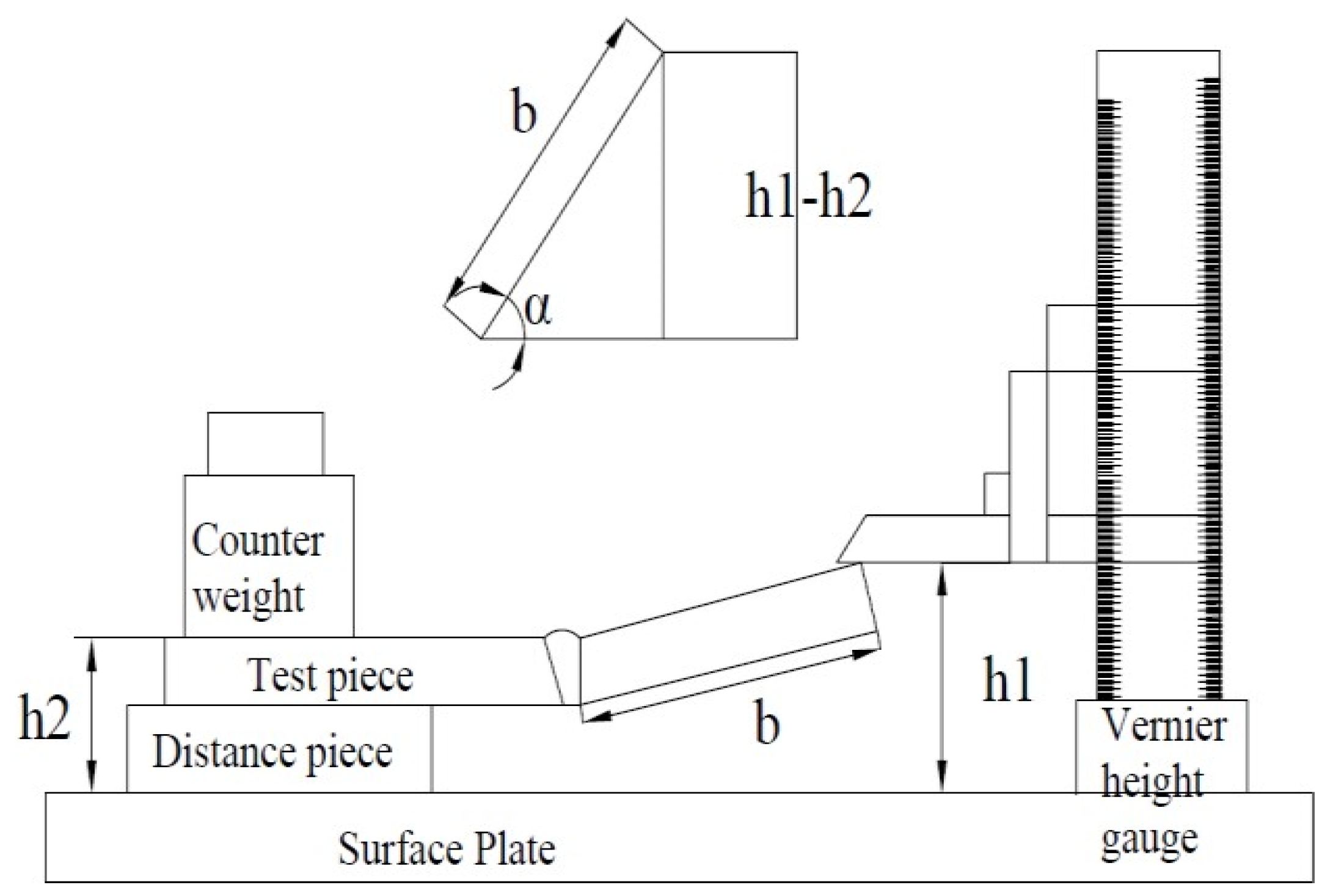

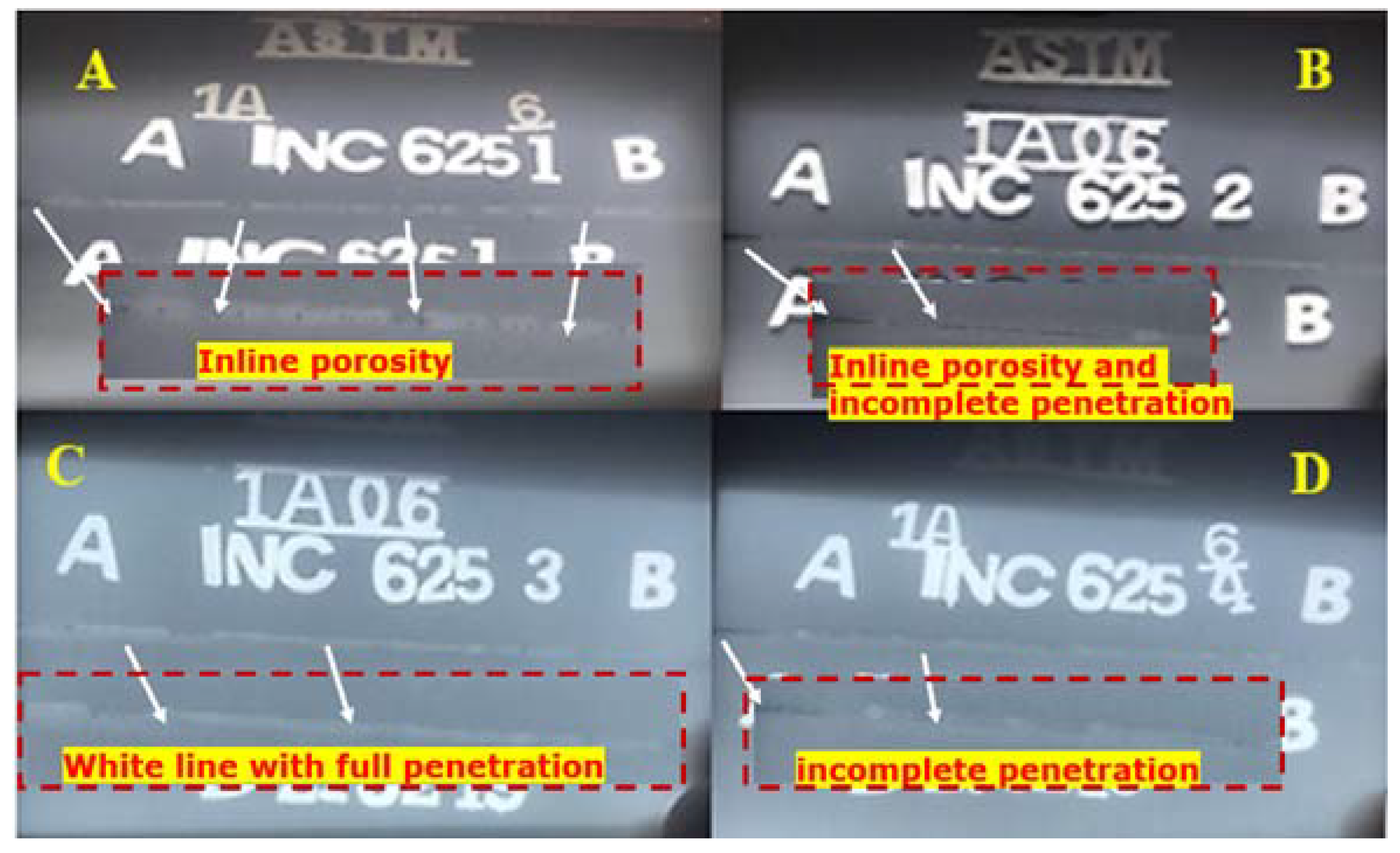

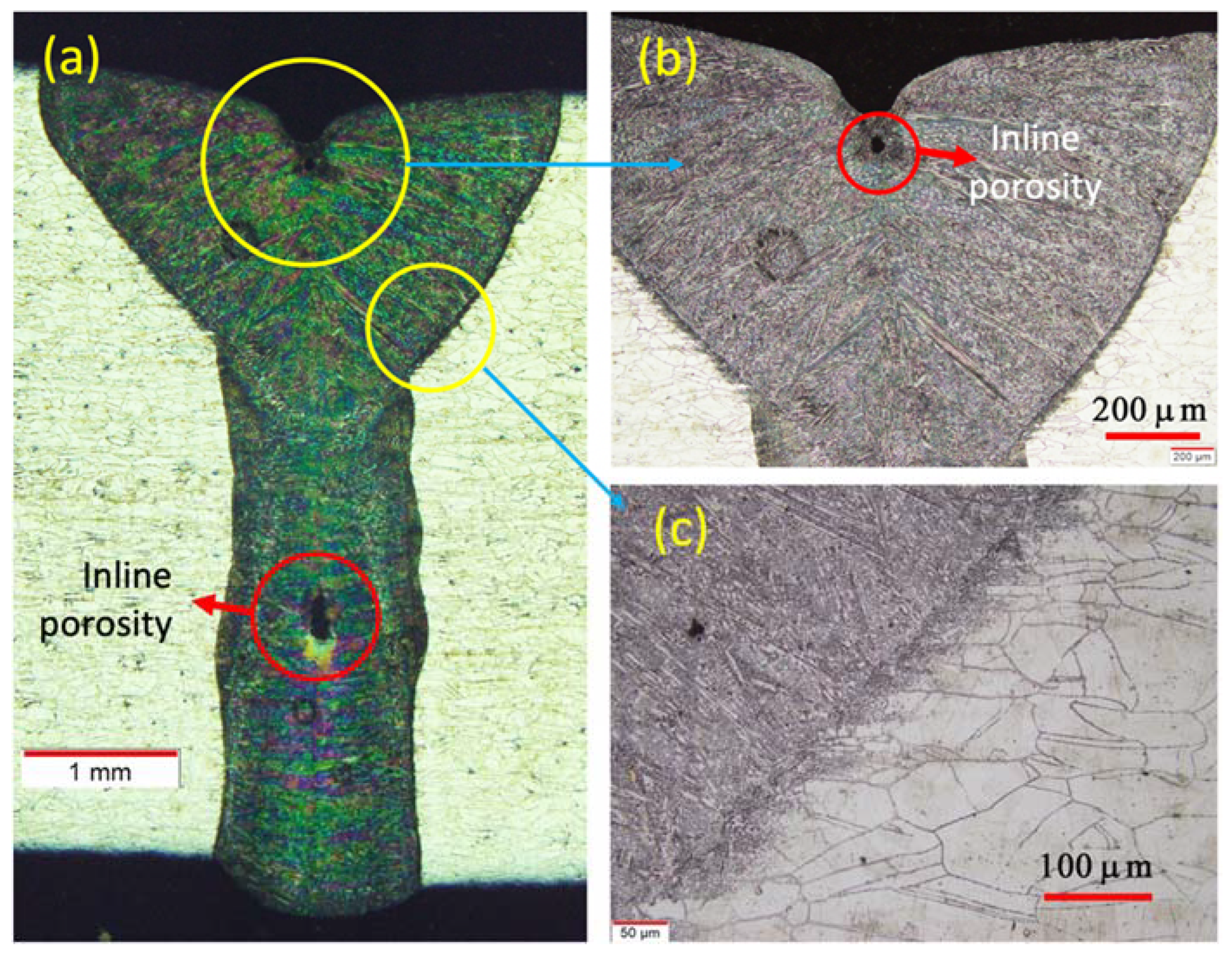
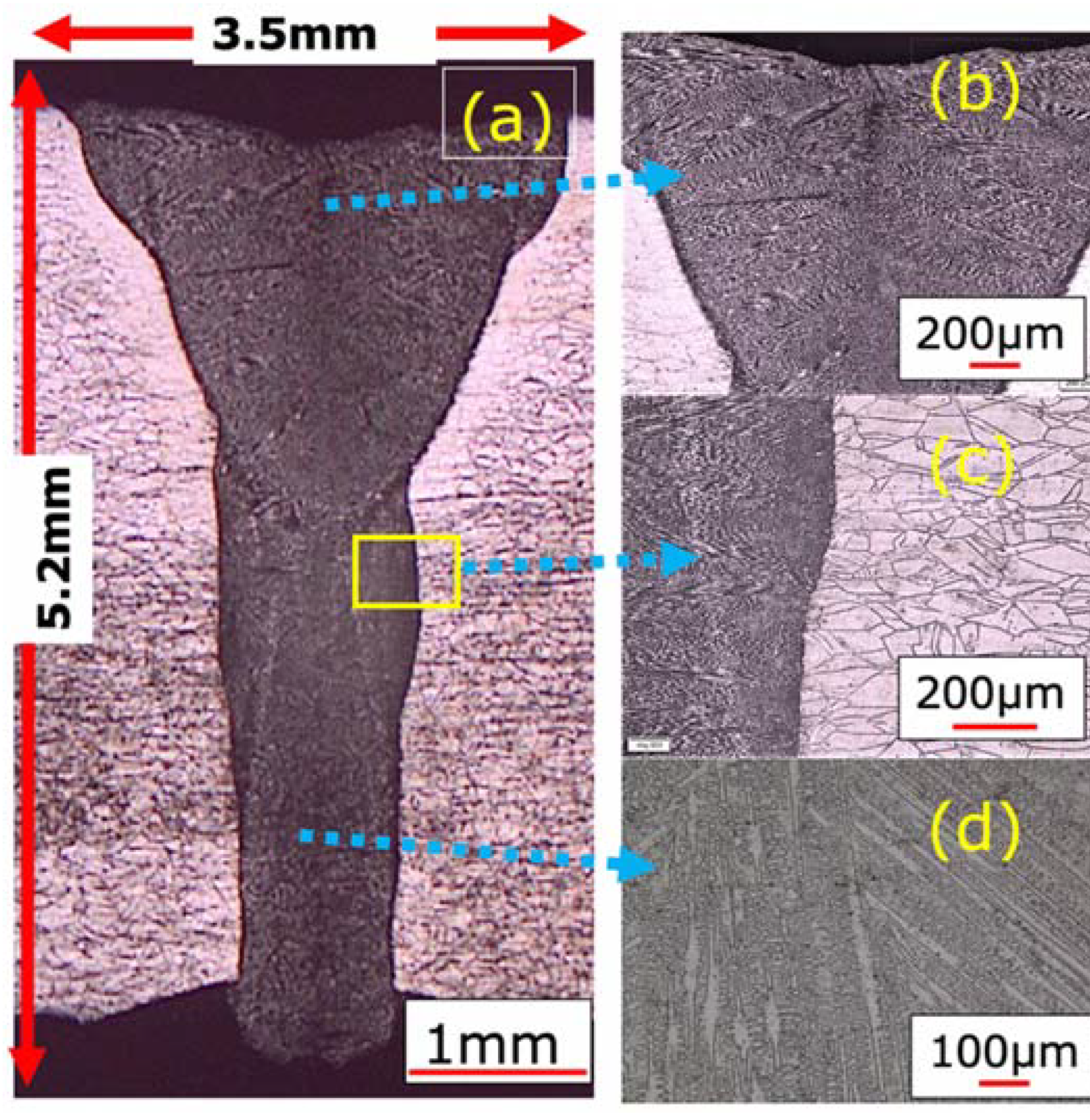
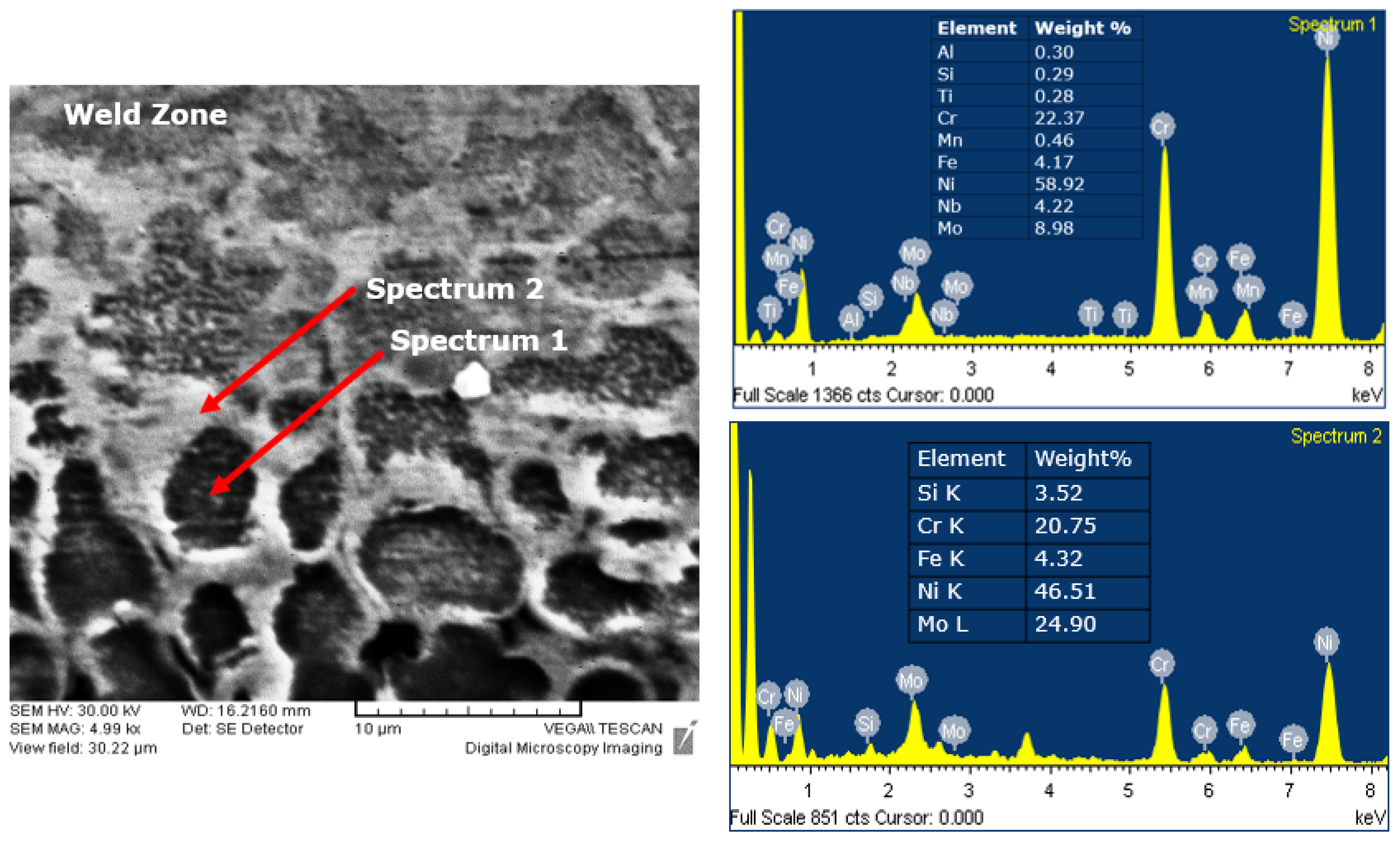
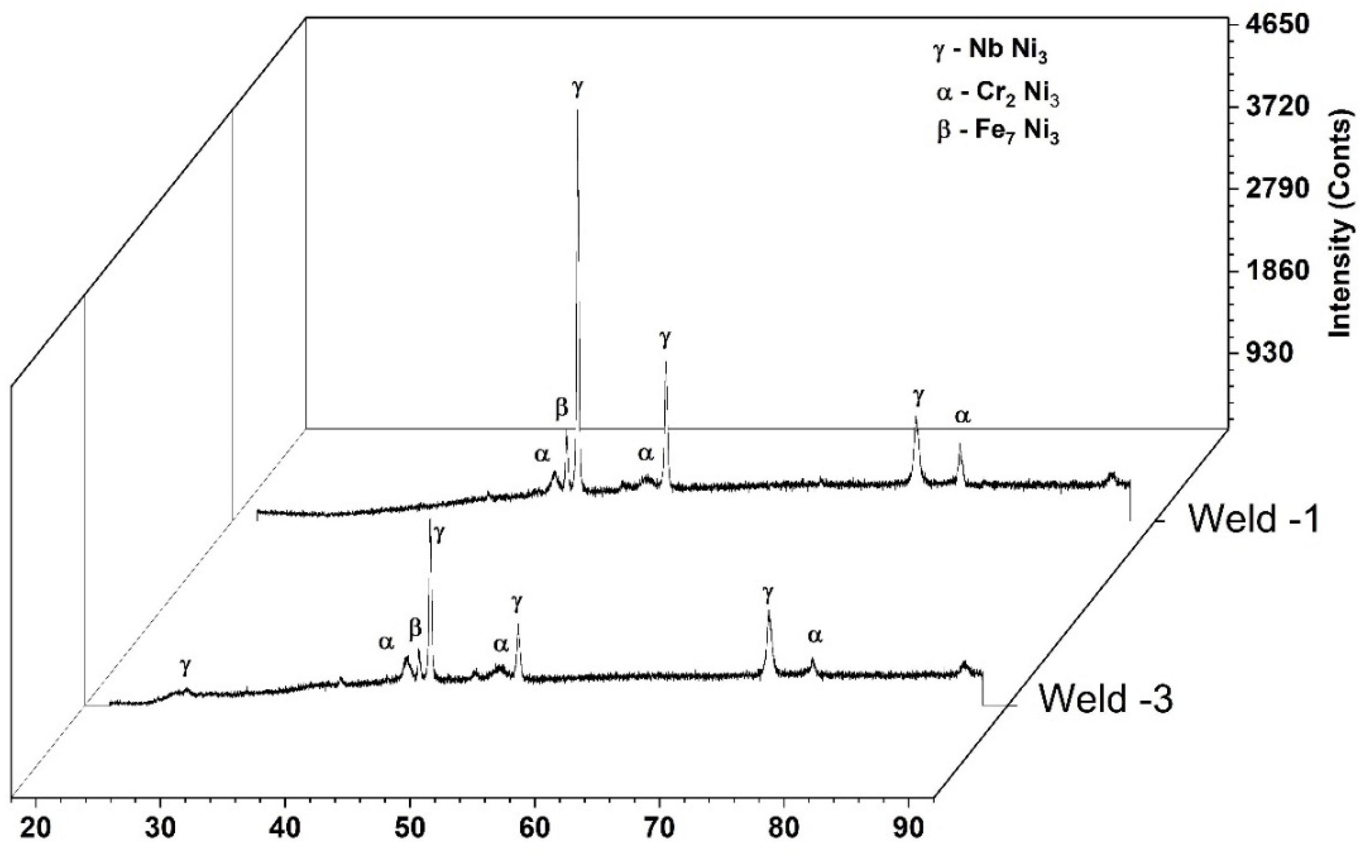
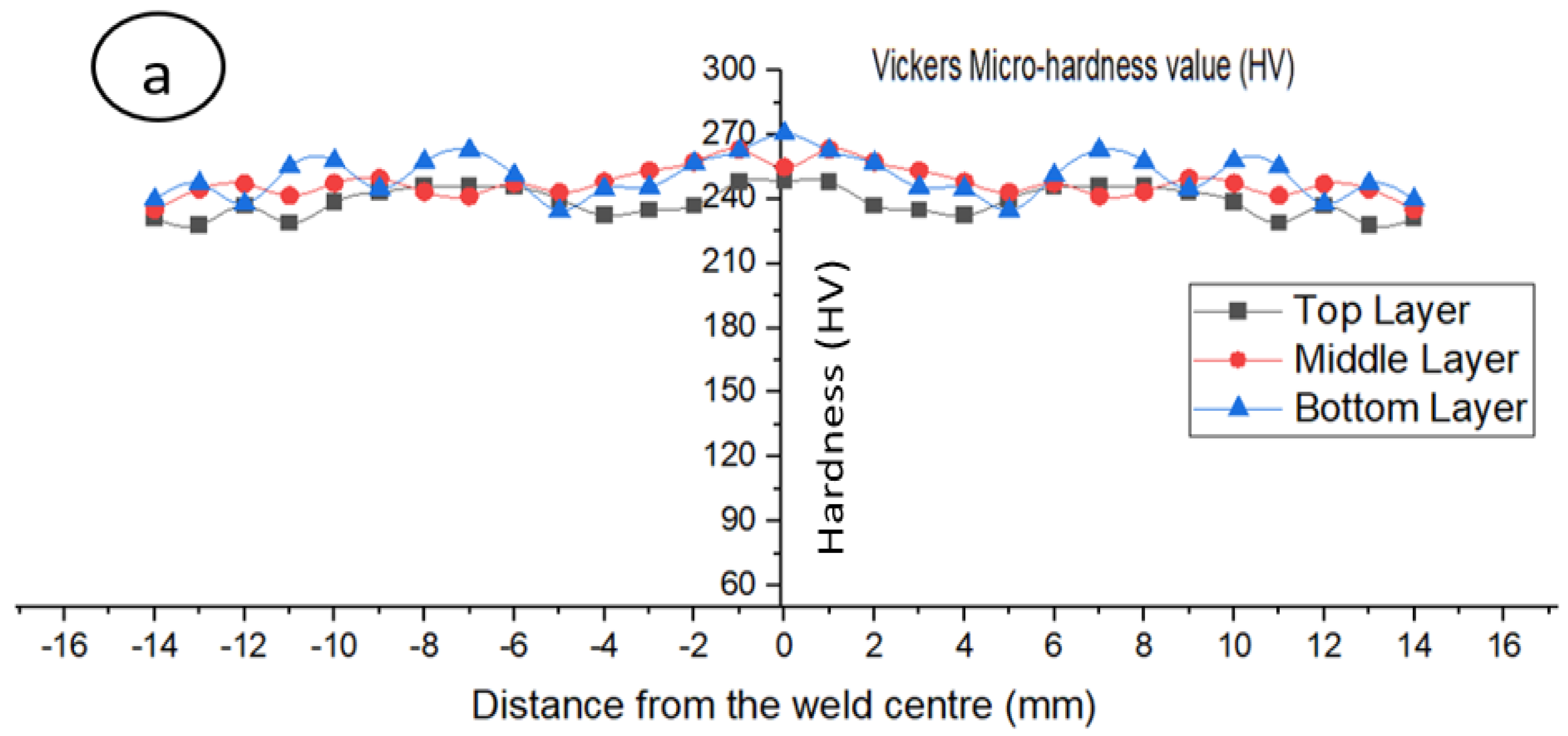
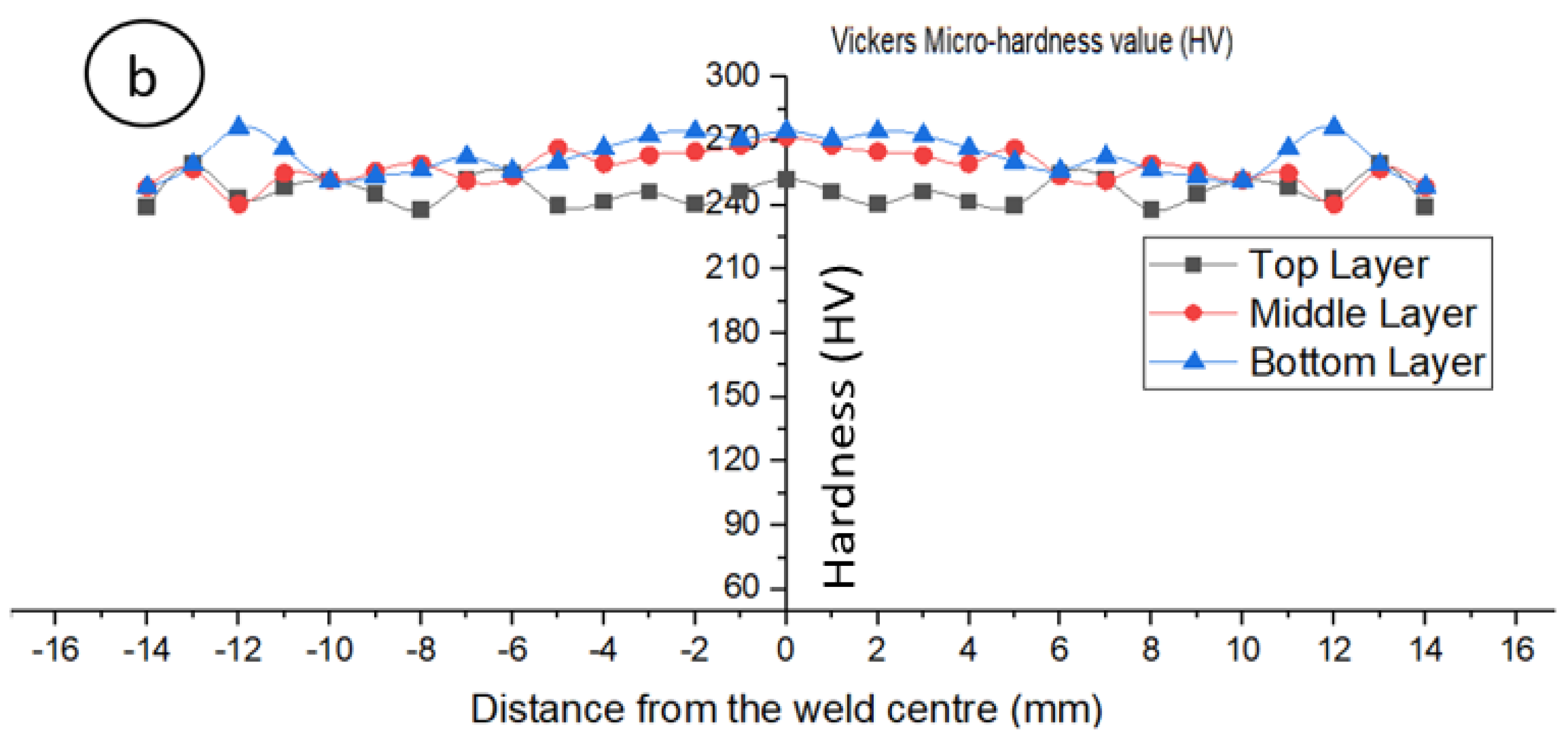
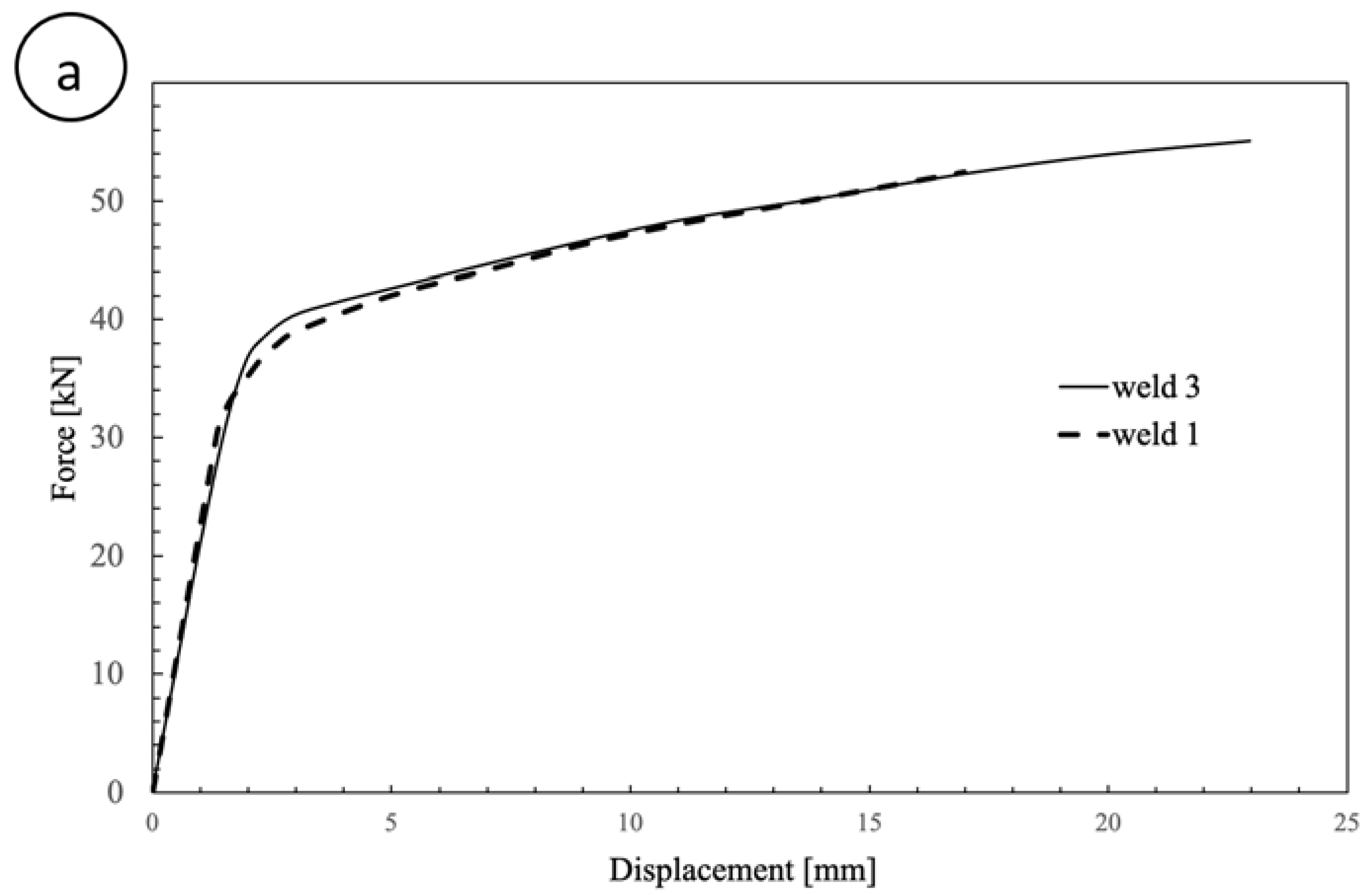
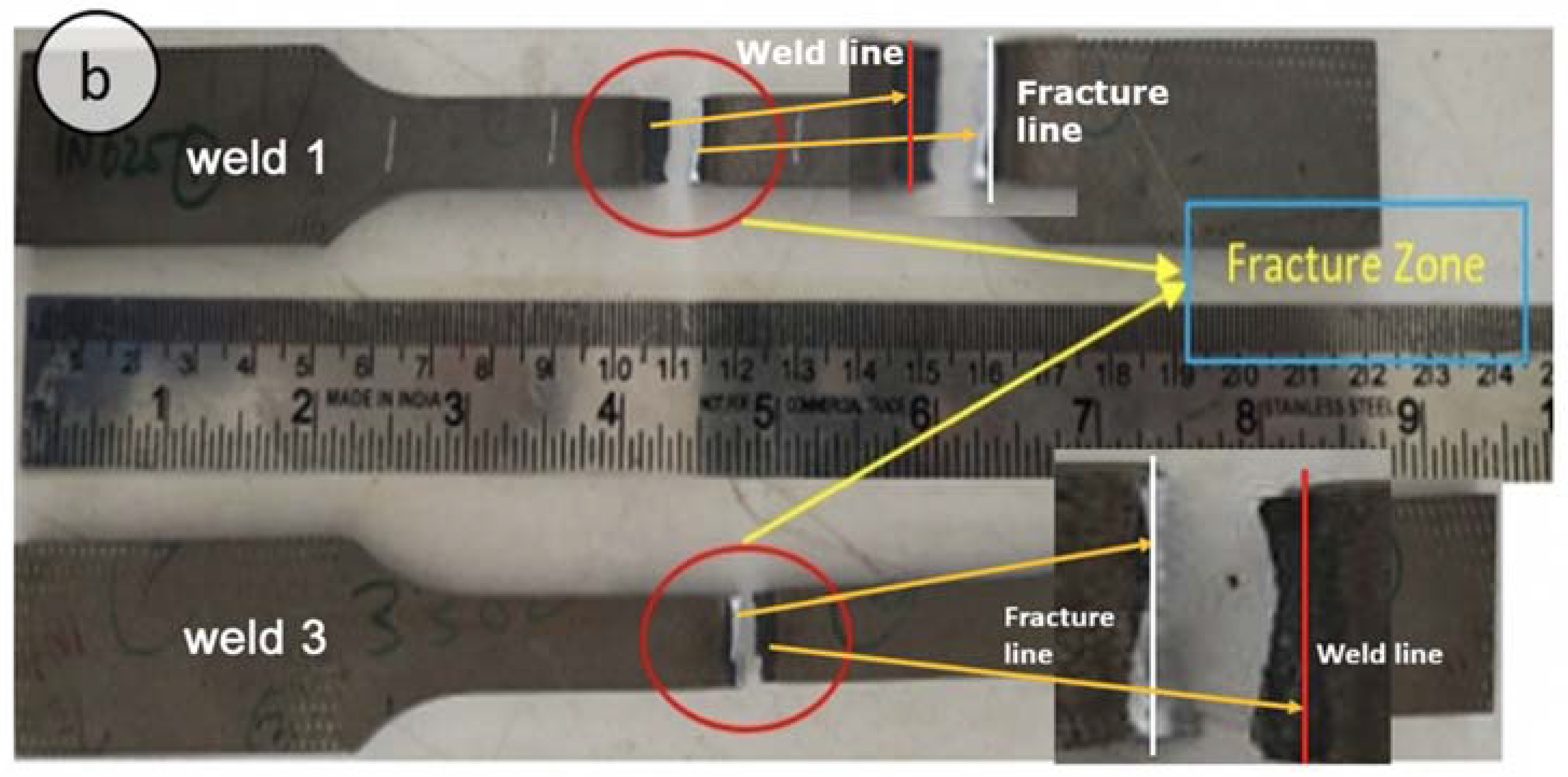
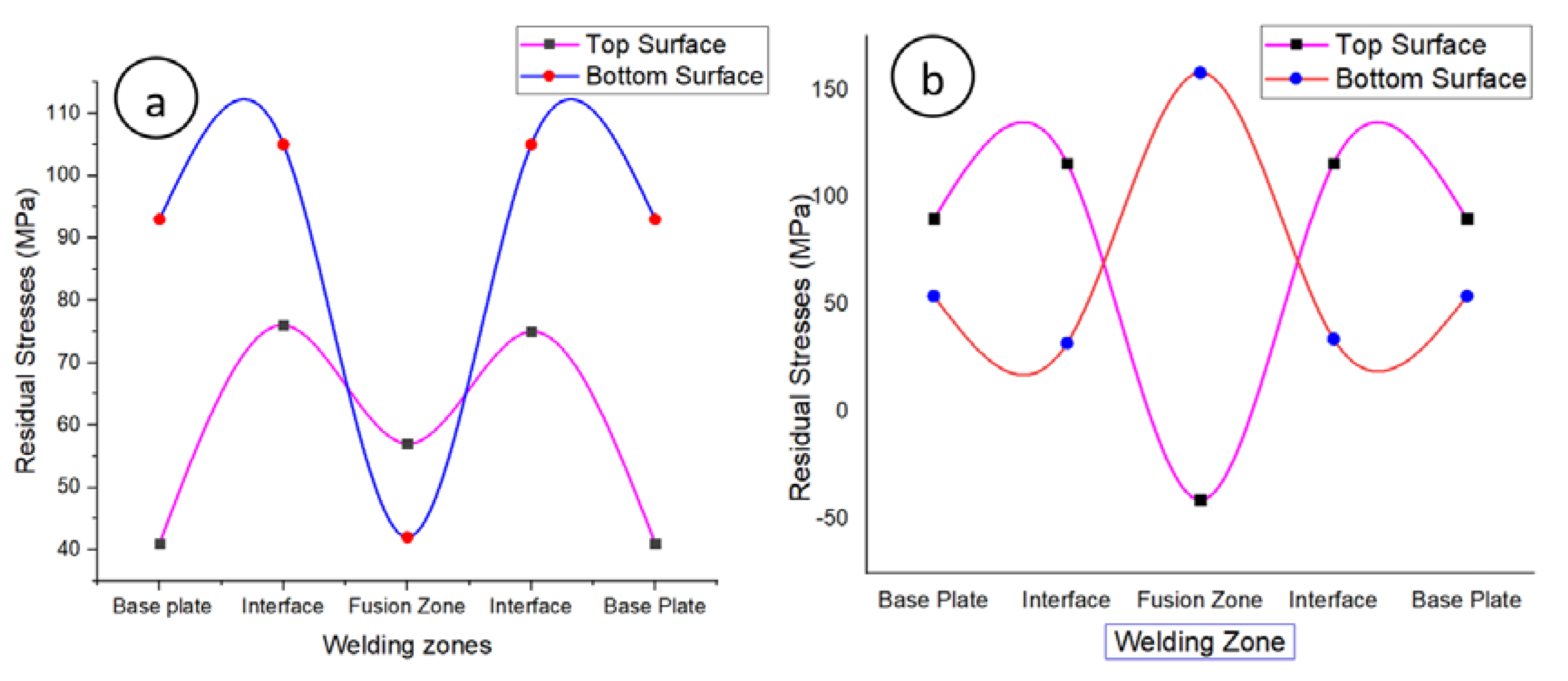
| Ni | C | Mn | S | Cu | Si | Cr | P | Others |
|---|---|---|---|---|---|---|---|---|
| Bal. | 0.1 | 0.5 | 0.015 | 0.5 | 0.5 | 20–23 | 0.015 | Fe 5, Al 0.40, Mo 8-10, Ti 0.1 |
| Trial No. | Laser Power [kW] | Welding Speed [m/min] | Shield Gas Flow Rate [lpm] | Heat Input [J/mm] |
|---|---|---|---|---|
| A | B | C | HI | |
| 1. | 3.0 | 1.0 | 10 | 180 |
| 2. | 3.0 | 1.5 | 15 | 120 |
| 3. | 3.3 | 1.0 | 15 | 198 |
| 4. | 3.3 | 1.5 | 10 | 132 |
| Trial No. | Heat Input [J/mm] | Weld Pool Width (Cap) [mm] | Weld Pool Height [mm] | Weld Pool Width (Root) [mm] | Penetration |
|---|---|---|---|---|---|
| 1 | 180 | 3.3 | 5.5 | 1.1 | Full |
| 2 | 120 | 2.6 | 4.3 | 1.2 | Partial |
| 3 | 198 | 3.5 | 5.4 | 1.4 | Full |
| 4 | 132 | 2.3 | 3.9 | 0.9 | Partial |
Publisher’s Note: MDPI stays neutral with regard to jurisdictional claims in published maps and institutional affiliations. |
© 2021 by the authors. Licensee MDPI, Basel, Switzerland. This article is an open access article distributed under the terms and conditions of the Creative Commons Attribution (CC BY) license (https://creativecommons.org/licenses/by/4.0/).
Share and Cite
Vemanaboina, H.; Gundabattini, E.; Akella, S.; Rao, A.C.U.M.; Buddu, R.K.; Ferro, P.; Berto, F. Mechanical and Metallurgical Properties of CO2 Laser Beam INCONEL 625 Welded Joints. Appl. Sci. 2021, 11, 7002. https://doi.org/10.3390/app11157002
Vemanaboina H, Gundabattini E, Akella S, Rao ACUM, Buddu RK, Ferro P, Berto F. Mechanical and Metallurgical Properties of CO2 Laser Beam INCONEL 625 Welded Joints. Applied Sciences. 2021; 11(15):7002. https://doi.org/10.3390/app11157002
Chicago/Turabian StyleVemanaboina, Harinadh, Edison Gundabattini, Suresh Akella, A. C. Uma Maheshwer Rao, Ramesh Kumar Buddu, Paolo Ferro, and Filippo Berto. 2021. "Mechanical and Metallurgical Properties of CO2 Laser Beam INCONEL 625 Welded Joints" Applied Sciences 11, no. 15: 7002. https://doi.org/10.3390/app11157002
APA StyleVemanaboina, H., Gundabattini, E., Akella, S., Rao, A. C. U. M., Buddu, R. K., Ferro, P., & Berto, F. (2021). Mechanical and Metallurgical Properties of CO2 Laser Beam INCONEL 625 Welded Joints. Applied Sciences, 11(15), 7002. https://doi.org/10.3390/app11157002









